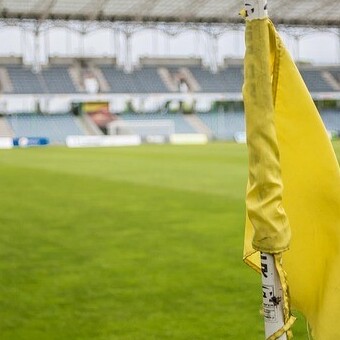
Soccer is more than just a sport; it’s a universal passion that cuts across cultures and continents. The origins of soccer date back centuries, with early forms of the game played in several countries worldwide. However, it wasn’t until the mid-19th century in England that soccer began to take the shape we recognize today. Understanding where soccer came from can give you a deeper appreciation for its widespread appeal.
What makes soccer so captivating to millions, possibly billions, of people? For one, it’s incredibly accessible. All you really need is a ball and a space to kick it around. This simplicity has allowed soccer to flourish in every corner of the globe, from urban streets to open fields. Its global popularity is fueled by how easily anyone can pick it up, regardless of age or skill level.
At the heart of soccer are its basic rules, which are relatively straightforward. The objective? Put the ball in the opposing team’s net more times than they do in yours. But this simple aim opens up layers of strategy, teamwork, and skill. The game is played in two halves, usually 45 minutes each, but there’s always room for surprises.
You might be wondering how soccer differs from other sports like American football or rugby. One of the key differences is the role of the feet. In soccer, players (except for the goalkeeper) primarily use their feet to navigate the ball, which requires a unique set of skills and techniques. This focus on footwork distinguishes soccer as an art form as much as a sport.
Soccer’s captivating blend of simplicity and complexity makes it an evergreen favorite in the world of sports. Whether you’re watching a high-stakes international match or just kicking a ball around with friends, soccer offers something for everyone. Get ready to explore what makes this the beautiful game.
Understanding the Game – Positions and Gameplay

Soccer’s magic comes alive on the field through its dynamic positions and gameplay. Each player has a specific role to play, contributing to the team’s overall success. From the goalkeeper, who is the last line of defense, to the forwards, whose main job is to score goals, every position is crucial. Defenders work tirelessly to protect their goal, while midfielders often have the most versatile duties, balancing between defense and attack. Learning these roles can help you appreciate the game’s flow.
Gameplay in soccer is structured around dividing time into two halves, generally 45 minutes each, with possible overtime and even penalty shootouts if needed to break a tie in certain competitions. The clock runs continuously, which means quick thinking and adaptability are key. Players must be prepared to switch from offensive to defensive roles in an instant. Familiarity with these rules enhances your viewing experience, making every moment of the match exciting.
Tactics and strategies are at the heart of competitive soccer. Whether it’s employing a high press to win back possession quickly or a counter-attacking strategy focused on rapid, surprise moves, different teams use varied approaches based on their strengths. Coaches play a vital role here, analyzing opponents and tweaking formations and strategies to gain the upper hand.
Teamwork in soccer is priceless. Communication on the field is essential, with players often needing to make split-second decisions in unison. Whether calling for the ball, positioning a teammate, or organizing defensive walls on a free kick, effective communication blends individual skills into a cohesive unit. Understanding these dynamics can help you appreciate not just the goals and tackles, but the entire symphony of actions that make soccer engaging.
Equipment and Gear – What Every Player Needs
[removed]
crossorigin=”anonymous”>[removed]
Soccer gear isn’t just about looking good on the field. The right equipment can enhance your performance and keep you safe. Let’s start with the essentials—cleats, shin guards, and uniforms. Cleats help with traction on grass or turf, making those quick sprints and sharp cuts more manageable. Shin guards are your best friends, absorbing impacts to protect legs from kicks and falls, while uniforms bring the team together and often fulfill league requirements.
Choosing the right soccer ball is another key decision. Different surfaces—grass, artificial turf, or indoor courts—might call for specific types of balls. While most balls look pretty similar, their construction and material can affect how they handle. Finding one that’s right for your playing surface can make all the difference in ball control and accuracy.
Safety gear often gets overlooked until it’s too late. Depending on the level of play, this might include headgear to prevent concussions or ankle braces for extra support. Injury prevention is always better than cure in soccer. Keeping a well-stocked first aid kit for minor injuries and knowing basic treatment can spare you unnecessary drama later.
Maintaining your gear can save money and ensure it’s always ready when you need it. Clean cleats after playing to get rid of mud and debris. Checking your ball’s inflation level regularly keeps it in top playing condition, and using mild detergent keeps your uniform looking fresh. Taking care of your equipment means you’ll always be prepared to jump into the game with confidence.
Soccer in the Spotlight – Tournaments and Competitions
Major tournaments in soccer are more than just matches; they’re global events that capture the imagination of fans everywhere. The FIFA World Cup is the pinnacle, uniting countries every four years in a celebration of skill, culture, and sportsmanship. UEFA Champions League provides a stage where the best European clubs compete, each match showcasing intense passion and mesmerizing play.
Understanding the difference between club and country competitions adds layers to your soccer fandom. Club-level battles happen regularly, involving teams filled with players from around the world, while national teams unite players from the same country for international glory. Each has its own charm and style, making the game accessible all year round.
Throughout soccer history, certain teams and players have reached iconic status. Take a journey through past legends like Pelé, whose flair changed how the game is played, or more recent stars like Lionel Messi and Cristiano Ronaldo, whose skills continue to set new standards. Learning about these figures can inspire and enrich your love for the sport.
Media coverage is a powerhouse in propelling soccer’s popularity. From live broadcasts to social media highlights, fans are more connected to the game than ever. Sponsorships bring an additional layer, with brands seeing the value in associating with soccer’s worldwide appeal. This connection between media, sponsorship, and sport showcases how soccer evolves beyond just what happens on the field.

This article does a fantastic job of breaking down soccer from its history to gameplay and global appeal. I really liked how it highlighted the simplicity of the sport, making it accessible to everyone while still being deeply strategic. The section on teamwork and communication stood out because it’s something casual viewers might overlook, yet it’s so crucial in high-level play. Also, the gear and maintenance tips were super practical for beginners. One thing I was wondering is do you think is the most underrated skill that separates a great player from an average one?
Yes, i think other players are just underrated.